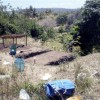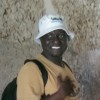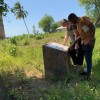This next blog is by the CONCH education officer, Patricia Hart of ArchaeoLink, who worked with the local schools in Pangani. Her blog post presents her time spent in July at the different schools whilst our archaeological work was taking place elsewhere.
*********************************************
PATRICA HART--ARCHAEOLINK
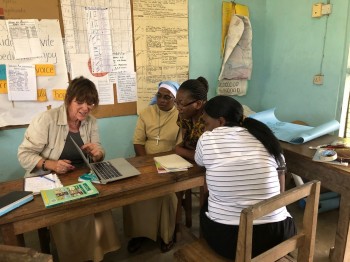
In our first week, we met the MP for Pangani, the Honourable Jumaa Hamidu Aweso. He told us, “Education here needs a lot of help!” So it was with some trepidation that we visited our first school, Pangani Primary. State primary schools teach in Swahili, so I was accompanied by Monica Shank Lauwo (who joined the project as a British Institute In Eastern Africa attachment student) to interpret and assist. Some private primary schools teach in English; while all secondary schools teach in English.
We had been told that teaching methods were “chalk and talk” and learning was by rote. This was hardly surprising with most classes numbering between 60-80 children and utterly devoid of the materials and equipment available in most developed countries’ primary schools.
After a brief introductory visit we arranged to return the following day for lengthier chats with the teachers. Our purpose was to discover what, if any, teaching took place regarding Pangani’s built heritage; would teaching materials to assist such be welcome; if so, how should they best be delivered?
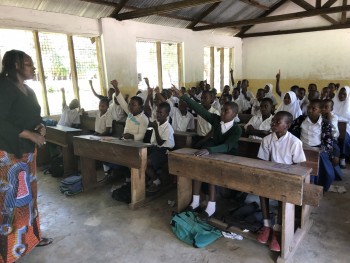

At Uzikwasa’s request, we’d prepared a number of Activity Sheets of puzzles which youngsters could use in their museum. These were themed on archaeology; trade; buildings; and building materials. We thought we’d show them to teachers as diverse examples for encouraging the transmission of knowledge. Two presentations of photographs, one of historic buildings and the other of the archaeological process, were also prepared to facilitate discussions.
We were warmly welcomed at Pangani Primary and spoke with two groups totalling 8 teachers. They were keen to have any additional teaching material we could provide, but with no computer, or printer, our usual method of electronic delivery of material was superfluous.
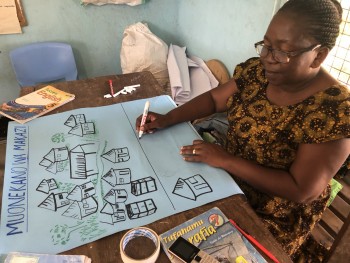
One of the teachers, Harieth, was busy making a poster to illustrate a teaching point and we were shown others they’d produced. So short of paper were they, that a couple had been drawn on discarded sacks! This gave me the idea of producing posters to stimulate discussion. The teachers enthusiastically described how they would use them and asked that we should also provide teachers’ notes and a sample of appropriate questions to ask.
We also discussed producing some laminated cards with the puzzle activities whose answers could be written by pupils in their exercise books, while other puzzles could be put onto posters for class work. I reluctantly told them that all would be possible only if funding became available. They assured me it would be found... We were then invited into one of the classes to chat to the children who, while lively, were extremely well behaved; and we took the opportunity to invite them to the site excavation Open Day.
...Find out about Patricia's school experiences in a second blog post--watch this space!

